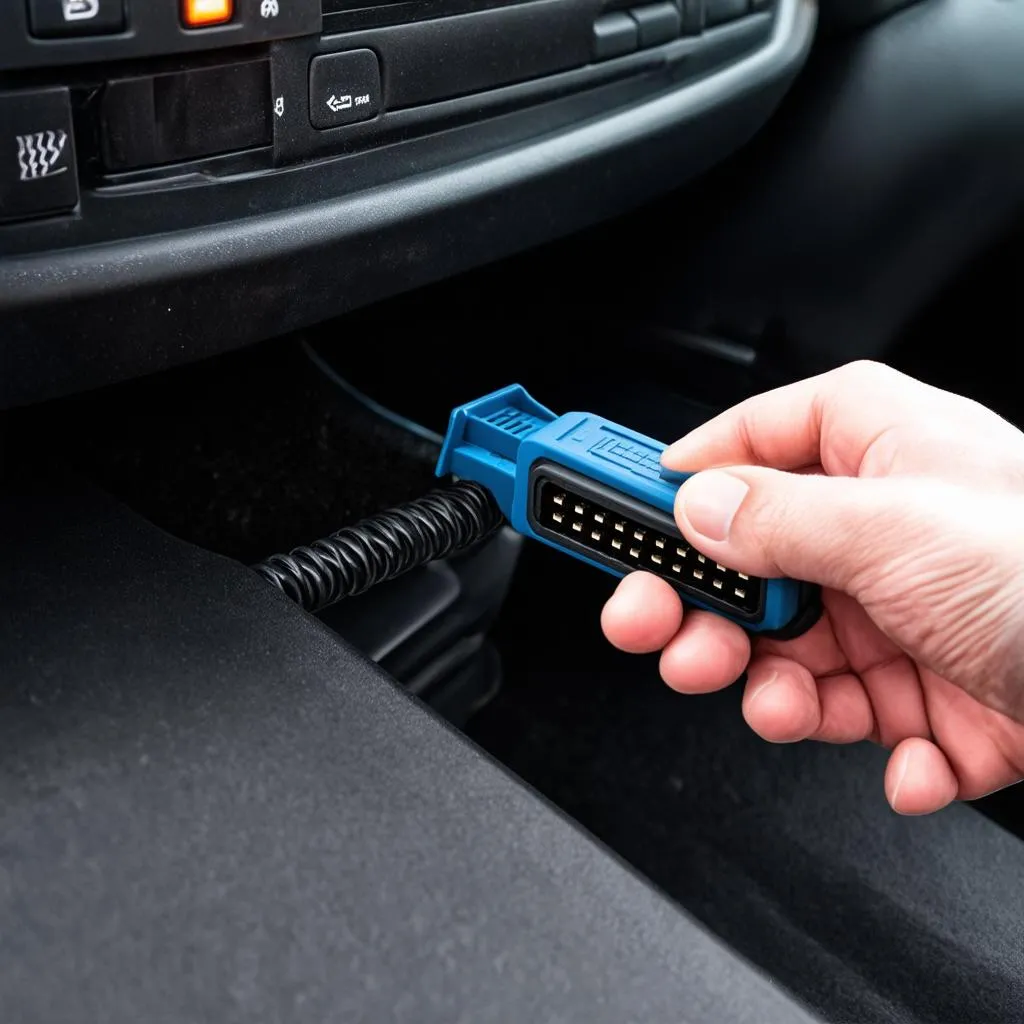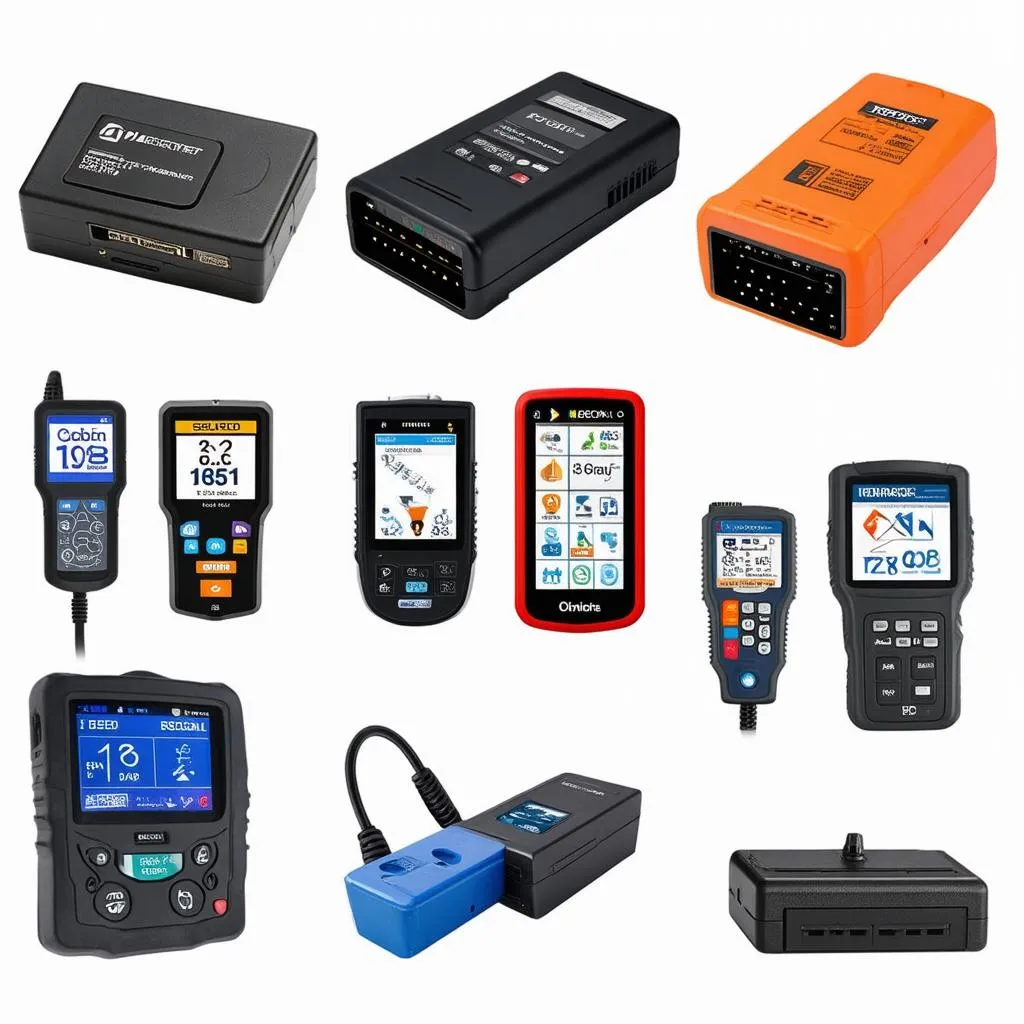Imagine this: you’re driving down a sunny California highway, windows down, music blasting – life is good. Suddenly, the dreaded “check engine” light pops up. You pull into a mechanic in San Francisco, only to be told they can’t diagnose the issue because their OBD scanner isn’t compatible with your car. Frustrating, right?
This scenario highlights a common question car owners have: Are All Obd Ports The Same? The answer, like many things in the automotive world, is a bit complicated – it’s a yes, and a no.
What Does “Are All Obd Ports The Same?” Really Mean?
To answer this question properly, we need to dissect it from a few different angles:
The Mechanic’s Perspective: A mechanic in Chicago might use a variety of OBD scanners, each tailored for different car makes. So, when they say “not all OBD ports are the same,” they’re often referring to the software and communication protocols, not necessarily the physical port itself.
The Technical Viewpoint: All OBD-II ports (the standard since 1996) share the same 16-pin connector and location within your car. This standardization was a game-changer, allowing for a universal point to access a vehicle’s diagnostic information.
The Practical Reality: While the physical port might be the same, the software and protocols used to communicate with the car’s computer can differ between manufacturers and even specific models.
So, What’s the Verdict?
Yes, all OBD-II ports physically look the same. You’ll find that familiar trapezoidal connector under your dashboard, whether you drive a Ford F-150 or a sleek Mercedes-Benz C-Class.
However, the real complexity lies in the communication protocols. Think of it like this: you might be able to plug your iPhone charger into a Samsung phone, but the charging technology and speed might differ. Similarly, an OBD scanner designed for European cars might not be compatible with a Japanese car, even though they both use the OBD-II port.
Navigating the World of OBD Ports: Common Scenarios
Let’s break down some common situations that highlight the nuances of OBD ports:
- You’re a DIY enthusiast using a generic OBD scanner: These scanners typically work with a wide range of car makes and models, providing basic diagnostic information like engine codes.
- You own a high-end European car and need advanced diagnostics: In this case, you’d likely need a specialized dealer-level scanner, like those used for BMWs or Audis, which can access more in-depth vehicle data. You can read more about OBD diagnostics on our dedicated page.
- You’re trying to use a Harley-Davidson specific OBD software on your Toyota Camry: This simply won’t work. The software and protocols are designed for specific vehicle types and are not interchangeable.
 OBD Port Location
OBD Port Location
Troubleshooting OBD Port Issues
Experiencing problems with your OBD port? Here are some common issues and solutions:
- Loose connection: Ensure the OBD connector is securely plugged into the port.
- Blown fuse: Check your vehicle’s fuse box for any blown fuses related to the OBD system.
- Damaged pins: Inspect the pins inside the OBD port for any bending or damage.
Pro Tip: “Always consult your vehicle’s owner’s manual for the exact location of the OBD port and any specific instructions,” advises automotive electronics expert, Dr. Emily Carter, author of “The Complete Guide to Automotive Electronics.”
Exploring Other Facets of OBD
The world of OBD is vast and ever-evolving. Here are some related questions you might find helpful:
- Where can I find the OBD port location in my 2013 Mercedes-Benz CLS?
- What is heavy-duty OBD and how does it differ from standard OBD-II?
 Different Types of OBD Scanners
Different Types of OBD Scanners
Need Help With Your Car’s Diagnostics?
Understanding your car’s diagnostics can be daunting. If you need assistance with OBD software installation or any car diagnostic needs, we’re here to help! Contact our team of automotive experts 24/7 via WhatsApp at +84767531508. We’re always happy to lend a hand!
Keeping Your Car Connected
The OBD port is a crucial gateway to your car’s health. Understanding its function and limitations empowers you to take control of your vehicle’s maintenance and diagnostics. Remember, while the physical port might seem universal, the communication language within can vary.
For further insights, explore our articles on specific OBD port locations, such as the one for the 2006 Ford Explorer.
Don’t hesitate to leave a comment below if you have any questions or want to share your OBD experiences. Happy driving!